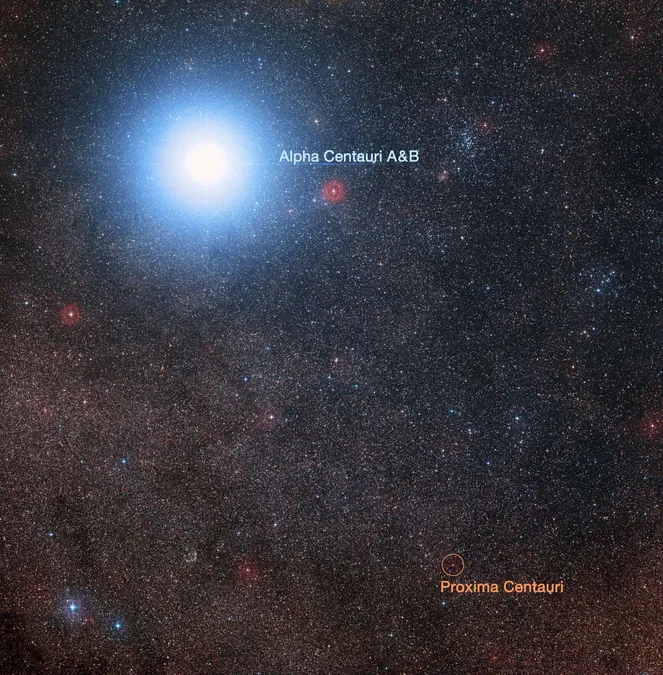
Astronomers on the Hunt for Exoplanets in Alpha Centauri System!
2025-05-23
Author: Sarah
A New Frontier in Exoplanet Research
In an era where over 5,900 exoplanets have already been confirmed, the search for new worlds continues to enthrall astronomers. Among these celestial quests, Alpha Centauri—the closest star system to our own at 4.344 light-years—has remained a tantalizing mystery. This binary system, which includes Proxima Centauri, has yet to reveal any planets, but recent observations may change that!
Exciting Developments with the James Webb Space Telescope
Thanks to cutting-edge tools like the James Webb Space Telescope (JWST), researchers are making significant strides. A recent international study led by Aniket Sanghi at Caltech hints that Alpha Centauri A, the system's dominant Sun-like star, could host a massive Jupiter-sized planet, alongside a bright dust disk swirling around it.
The Challenge of Observing Exoplanets in Binary Systems
Observing planets in binary star systems like Alpha Centauri is notoriously tricky. The close presence of Alpha Centauri B can interfere with planet detection, complicating analysis efforts. Sanghi explained, "The gravitational effects of Alpha Cen B make it hard to determine if planets exist around Alpha Cen A. However, simulations indicate that stable planets might still be lurking in the shadows."
Innovative Techniques and Breakthrough Findings
To combat the overwhelming brightness of both stars, Sanghi and his team employed a clever strategy involving a brighter reference star, epsilon Muscae. This technique allowed them to successfully detect potential signals obscured by starlight. Their findings indicate the presence of a Jupiter-sized planet orbiting Alpha Cen A, positioned at a distance of 1.5 to 2 AU (astronomical units) from the star.
A Glimpse at Zodiacal Dust in a Neighboring System
Moreover, the study revealed that the zodiacal dust disk around Alpha Cen A is notably brighter—about five times so—compared to our own Solar System's dust. This dust, a byproduct of asteroid collisions and comet activity, produces a glow known as zodiacal light, visible during twilight.
What’s Next For This Groundbreaking Research?
The preliminary results are only the beginning of an extensive observational campaign. Sanghi emphasizes the power of JWST, stating, "We’re still analyzing data to ensure we aren’t missing any planets in less favorable spots. The search for a Jupiter is far from over!" This research not only opens doors to potential discoveries in Alpha Centauri but also marks a significant step in understanding planetary systems beyond our own.
Stay Tuned for More Results!
As the research evolves, Sanghi's team plans to publish further insights from their multiple visits to Alpha Centauri A. This study, recently highlighted in the American Astronomical Society's Research Notes, is just the tip of the iceberg in uncovering what secrets Alpha Centauri may hold. The nearest stellar system to Earth could soon unveil more than just questions—perhaps new worlds waiting to be explored!






 Brasil (PT)
Brasil (PT)
 Canada (EN)
Canada (EN)
 Chile (ES)
Chile (ES)
 Česko (CS)
Česko (CS)
 대한민국 (KO)
대한민국 (KO)
 España (ES)
España (ES)
 France (FR)
France (FR)
 Hong Kong (EN)
Hong Kong (EN)
 Italia (IT)
Italia (IT)
 日本 (JA)
日本 (JA)
 Magyarország (HU)
Magyarország (HU)
 Norge (NO)
Norge (NO)
 Polska (PL)
Polska (PL)
 Schweiz (DE)
Schweiz (DE)
 Singapore (EN)
Singapore (EN)
 Sverige (SV)
Sverige (SV)
 Suomi (FI)
Suomi (FI)
 Türkiye (TR)
Türkiye (TR)
 الإمارات العربية المتحدة (AR)
الإمارات العربية المتحدة (AR)